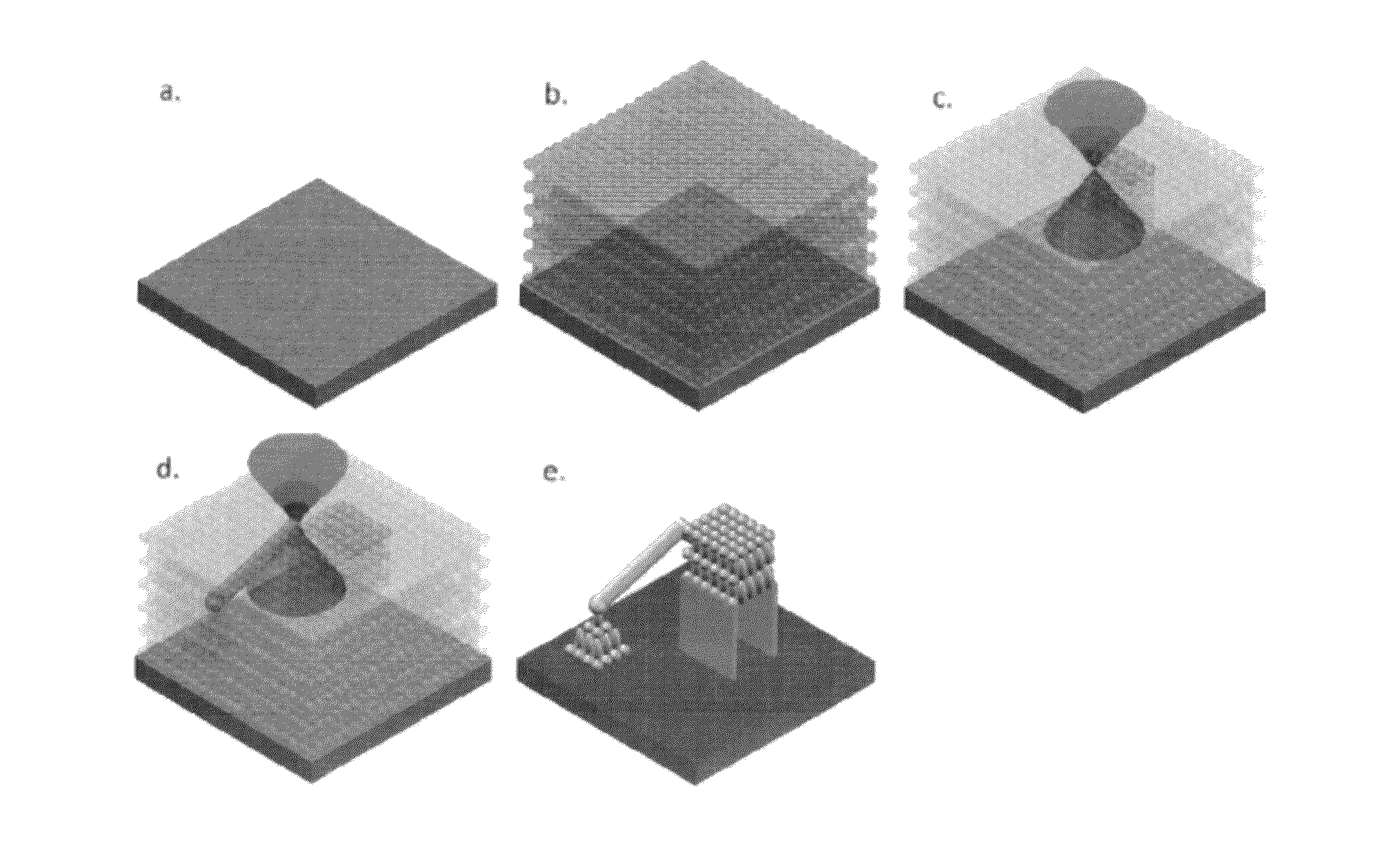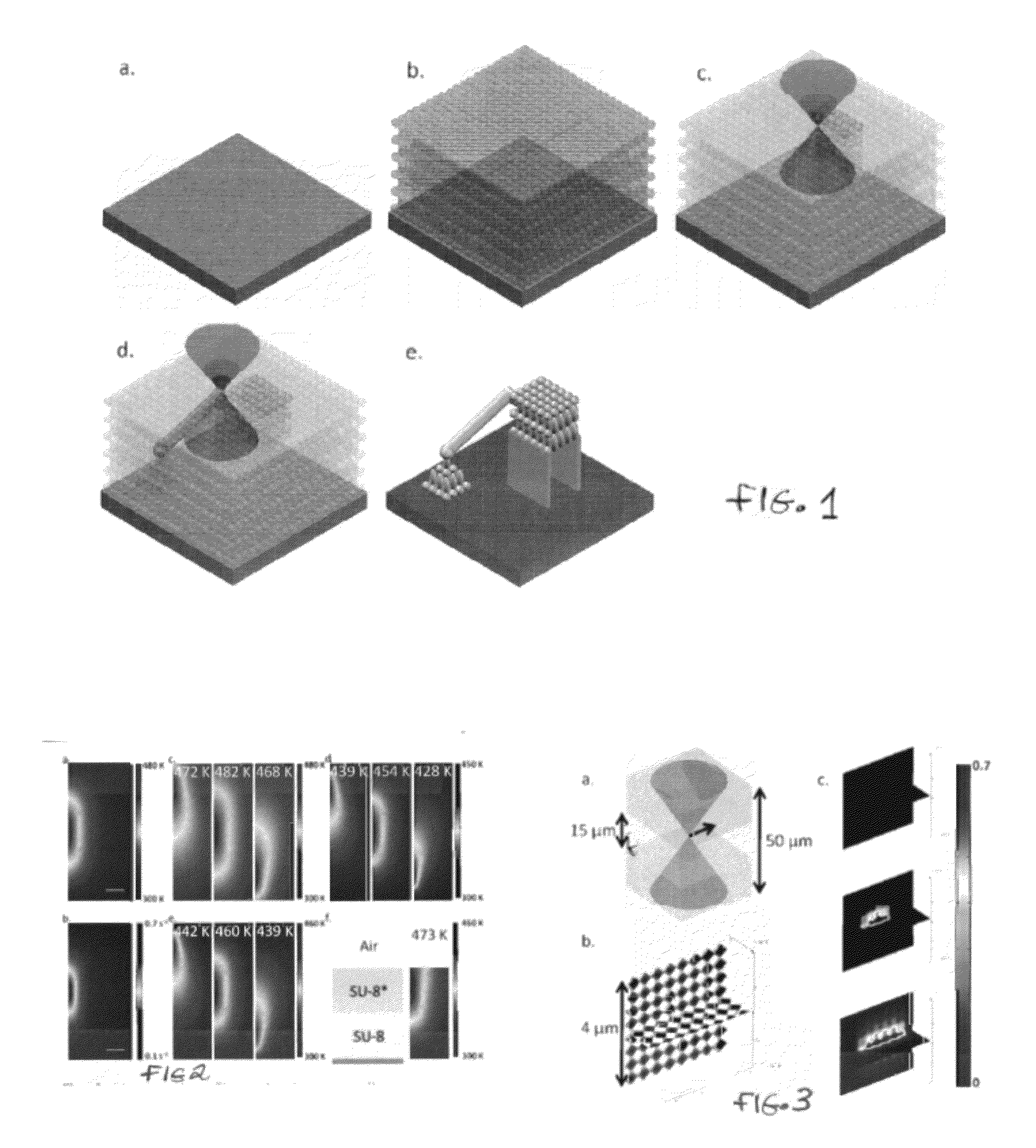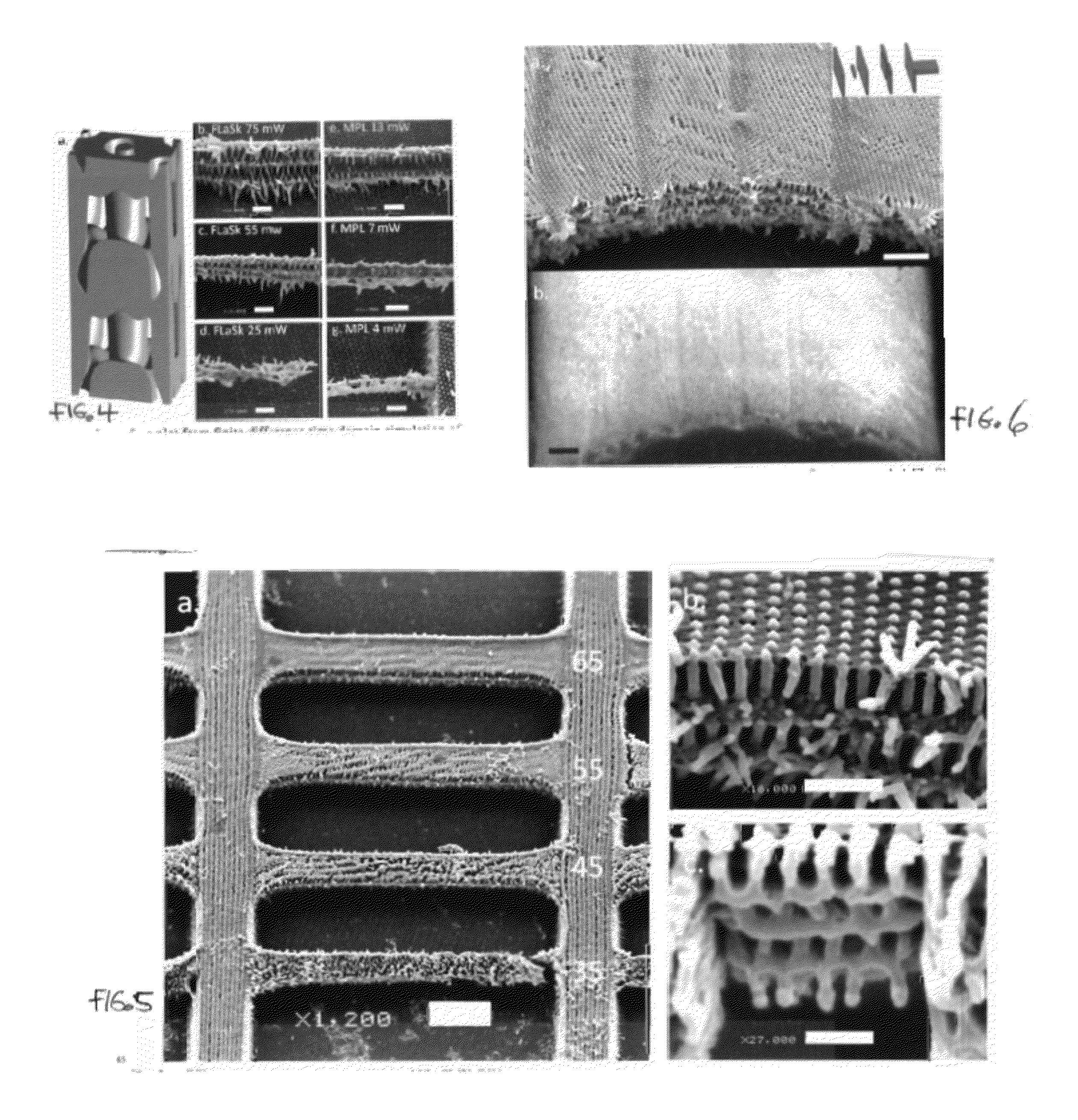Hybrid lithographic method for fabricating complex multidimensional structures
a multi-dimensional structure and hybrid technology, applied in the field of hybrid lithographic methods for fabricating complex multi-dimensional structures, can solve the problems of limited local hierarchical structure made by these techniques, limited local hierarchical structure, and limited microstructure, so as to enhance design and cost cutting, speed and flexibility of flask techniques
- Summary
- Abstract
- Description
- Claims
- Application Information
AI Technical Summary
Benefits of technology
Problems solved by technology
Method used
Image
Examples
Embodiment Construction
[0026]With reference to FIG. 1, deposition of an active resist layer is shown in FIG. 1a. The resist is exposed by phase mask or multibeam interference lithography as shown in FIG. 1b. FIG. 1c shows a continuous wave heating beam at the wavelength of the dye absorption. FIG. 1d shows the three-dimensional direct write step to define solid features such as supports, defects, or other structures not part of the interference lithography pattern. FIG. 1e shows the development of the patterned structure without additional post-baking.
[0027]FIG. 1 thus shows an idealized schematic for the eventual capabilities of FLaSk. In FLaSk, the broadly focused rastering laser beam of LSA is replaced with a tightly focused source inside of the photoresist. This allows for 3D direct write LSA with up to sub-micron 195 features possessing hierarchical substructure defined by the IL step. Ideally, this process occurs without the DW beam performing additional photoinitiation, thus maintaining the contras...
PUM
| Property | Measurement | Unit |
|---|---|---|
| power | aaaaa | aaaaa |
| glass transition temperature | aaaaa | aaaaa |
| glass transition temperature | aaaaa | aaaaa |
Abstract
Description
Claims
Application Information
 Login to View More
Login to View More - R&D
- Intellectual Property
- Life Sciences
- Materials
- Tech Scout
- Unparalleled Data Quality
- Higher Quality Content
- 60% Fewer Hallucinations
Browse by: Latest US Patents, China's latest patents, Technical Efficacy Thesaurus, Application Domain, Technology Topic, Popular Technical Reports.
© 2025 PatSnap. All rights reserved.Legal|Privacy policy|Modern Slavery Act Transparency Statement|Sitemap|About US| Contact US: help@patsnap.com



